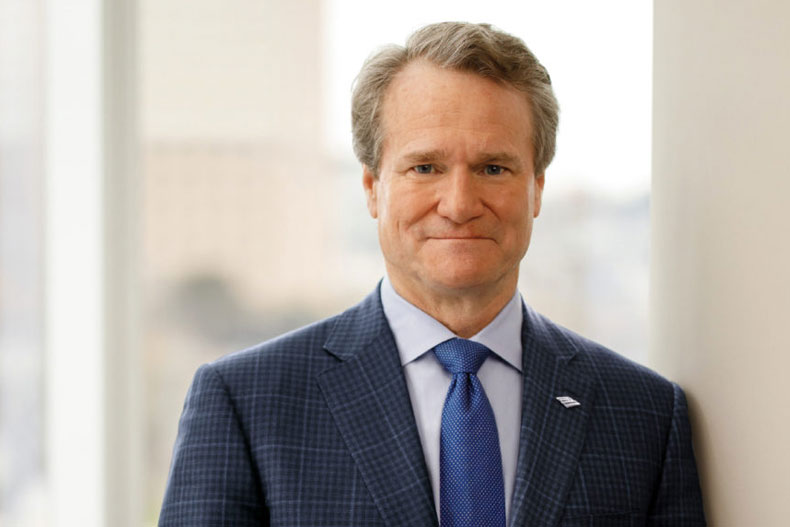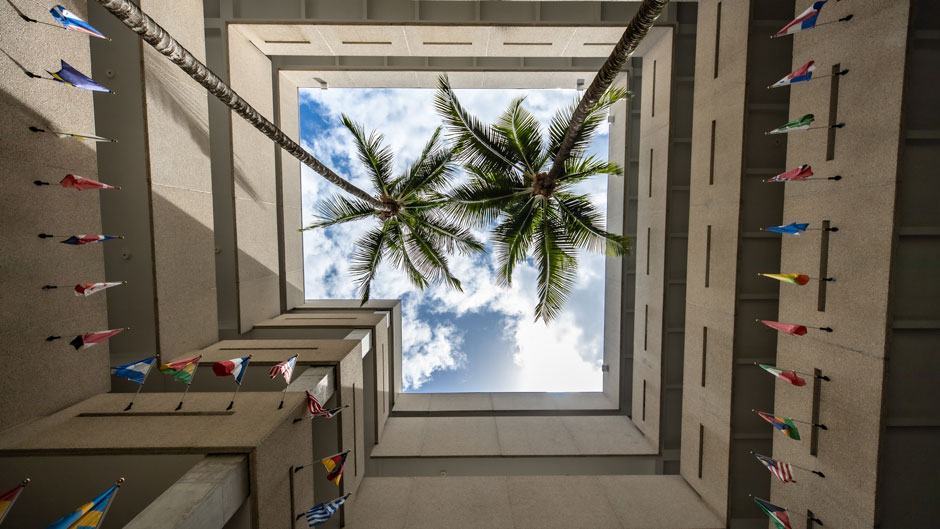Brian Moynihan, president and chief executive officer of Bank of America, said the company’s approach to prioritize the safety and well-being of its employees has been pivotal in helping the country’s second-largest bank navigate the economic crisis related to the pandemic.
Speaking during a webinar Wednesday hosted by the University of Miami Patti and Allan Herbert Business School, Moynihan explained how in early March the bank moved quickly to safeguard and provide key support for its workforce of some 200,000 employees.
“You have to have a set of principles when you go after a problem,” Moynihan said, “and for us that means responsible growth and that we run a teammate-centric, customer-centric, community-centric, and ultimately shareholder-centric view—but the real question was how to get our teammates, our employees, safe.”
Support included a “no-layoffs-this-year” policy, a $100-a-day additional childcare compensation for the 40,000 households with children, 100,000 computers for remote work, and “massive amounts” of personal protective equipment.
“That allowed a lot of stability and calmness because the last thing you want is for employees to have to worry and stress,” said Moynihan, who has been CEO since 2010.
In response to questions from Kourtney Gibson, a member of the University of Miami Board of Trustees and president of the University's Alumni Association Board of Directors, and John Quelch, dean of the Miami Herbert Business School, Moynihan answered a range of queries regarding the bank’s strategy to navigate the crisis, its shift to digitized services, the development of new services, and his perspectives on leadership.
Asked to compare the 2008 crisis with the current pandemic, Moynihan identified a marked contrast in terms of the health of the banking industry.
“In 2008, there was a lot of overleverage in the system in many different ways, while for the current crisis, the banking system was in terrific shape,” he said.
“Our company and our industry were a source of strength because of capital liquidity. We aren’t the problem, and that’s a totally different atmosphere,” he added.
Moynihan said that the pandemic has prompted changes in the bank’s communications and operations, and it has accelerated efforts to digitize services.
“We’ve learned a lot about resiliency, and now, because we realized we could spread people out more easily, our resiliency plan—not only for the pandemic but for situations like the fires in the West, earthquakes, hurricanes, and monsoons—is different,” he said.
The number of Bank of America branches has been reduced from 5,800 when Moynihan became CEO to approximately 4,300 today, he pointed out, adding that the bank would continue its “high touch and high tech” approach to meet the needs of its customers.
“Digital presence has allowed for massive change in terms of what goes on in the branches, and that will continue as we keep refining,” he said, noting that some branches are now fully automated and that customers are more accustomed to the online services.
Moynihan said that reports indicate the bank has managed the pandemic relatively well—a strong fourth quarter, a projected 4 to 5 percent growth next year, and 90-percent recovery from pre-pandemic figures. While he is optimistic, however, many concerns linger—particularly if the virus persists.
“The crisis issue is that if this thing goes on too long and the unemployment becomes more permanent—the human issue of unemployment is a tragedy, and we need to help them by providing unemployment benefits,” he said.
 Additionally, Moynihan added, it’s critical to “provide a bridge” and continued support for the many facets of the economy—the unemployed, the small businesses, the airlines, the movie theaters, the states and cities, nonprofit museums and venues—that continue to struggle while we await a vaccine.
Additionally, Moynihan added, it’s critical to “provide a bridge” and continued support for the many facets of the economy—the unemployed, the small businesses, the airlines, the movie theaters, the states and cities, nonprofit museums and venues—that continue to struggle while we await a vaccine.
“The economy has already recovered—the question is, can it stay here, and can we get people to feel safe again?” he remarked.
He credited the bank’s focus on responsible and balanced growth as key to its success.
Bank of America is headquartered in Charlotte, North Carolina. And a survey several years ago ranked the city 49 out of 50 in the U.S. with opportunities for economic mobility.
“It was kind of a shock,” Moynihan noted, adding that as a result the bank adopted an ambitious initiative to create improved health, housing, entrepreneurship, and job skills opportunities.
In the wake of the George Floyd killing and the deaths of other Black people at the hands of police, the bank provided support to the Smithsonian to launch a “Race, Community, and Our Shared Future.” The initiative aims to further the conversation about race. Moynihan said that 180,000 of the bank’s employees have already participated in the program.
“We’ve got to have conversations that people understand, not that those are going to solve problems. But without at least starting that understanding, we’re never going to get people to understand what’s going on and what people are really worried about,” he said.
“The way we define inclusion is that you have to be able to bring your whole self to work and be successful no matter where you came from, no matter what your background or education,” he explained.
Moynihan shared that in the aftermath of the attack on the World Trade Center in 2001, he learned a lasting business and leadership lesson about the importance of listening.
“You realize that in a crisis like that, the thing employees need you to do most is just to listen—to be a sponge,” he said. “And then after you do that, you can figure out what they need to get back to do what they need to.”

